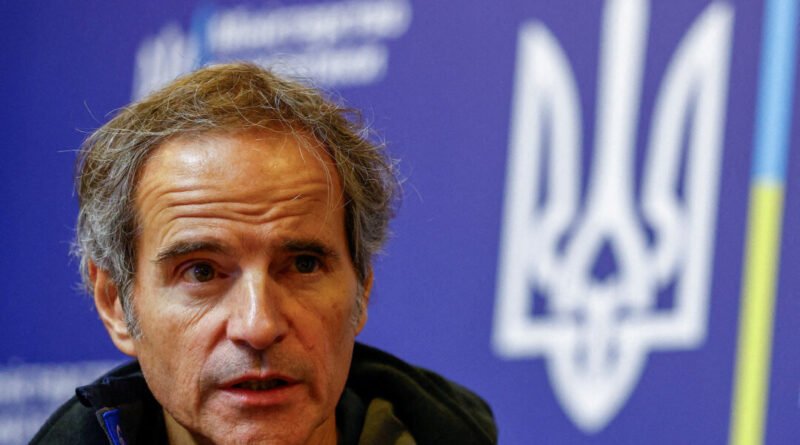Head of UN Nuclear Agency Tours Kursk Atomic Plant During Ukrainian Conflict
The Moscow forces are currently ‘mopping up’ the besieged border region while Kyiv reports fresh territorial gains.
The head of the International Atomic Energy Agency (IAEA), Rafael Grossi, recently visited a nuclear plant in Russia’s Kursk region, where Ukrainian forces have been conducting a cross-border offensive.
Moscow claims that the Soviet-era nuclear plant has been targeted multiple times by Ukrainian forces since the start of the cross-border offensive on Aug. 6, resulting in the seizure of a portion of Russia’s western Kursk region.
“The safety and security of nuclear facilities must not be compromised at any cost,” Grossi stated before his visit to Kursk on Aug. 27. “The safety and security of all nuclear power plants is a critical concern for the IAEA.”
Reports of fighting in the border region have come within 25 miles of the nuclear plant.
Russian President Vladimir Putin recently accused Ukrainian forces in the region of attempting to attack the nuclear plant.
“The enemy tried to launch attacks on the nuclear power plant. The IAEA has been informed,” Putin stated at a meeting with senior Russian officials on Aug. 22.
No documentary evidence was provided for this claim, which was made by Putin at the meeting.
On the other hand, Kyiv has not yet responded to the accusation regarding the attempted attack on the facility by its forces.
In 2022, Russia invaded significant parts of eastern and southeastern Ukraine, raising international concerns about the safety of nuclear plants in or close to conflict zones.
Both Moscow and Kyiv have accused each other of attacking a nuclear plant in Zaporizhzhia, one of the four Ukrainian regions that Russia invaded and annexed two years ago.
Prior to his visit, Grossi emphasized the necessity of visiting the Kursk nuclear plant, operated by Rosatom, Russia’s state nuclear corporation, to evaluate its security.
Upon arrival in Kursk, Grossi appeared on Russian state television discussing the nuclear plant with Russian officials.
In previous statements, the IAEA chief had warned of the potential catastrophe if nuclear plants near conflict zones were targeted by either side of the conflict.
In 1986, the Chornobyl nuclear plant in northern Ukraine, under Soviet control, witnessed what is widely considered the worst civilian nuclear disaster in history.

The Zaporizhzhia Nuclear Power Plant outside Enerhodar in the Zaporizhzhia region, Ukraine, on Sept. 2, 2022. International Atomic Energy Agency/Handout via Reuters
Claims of Gains by Both Sides
Russian military officials state that Russian forces are currently reversing Ukrainian territorial gains in Kursk.
On Aug. 27, Apty Alaudinov, a senior Russian Defense Ministry official, announced that Russian forces had driven out Ukrainian troops from two settlements in the border region.
“This area has been cleared out, and control has been established,” he stated in a video message on the Telegram platform.
Alaudinov reiterated Russian assertions that Ukrainian forces in Kursk were suffering significant losses.
Earlier, Kyiv claimed that its forces had gained control over more than 450 square miles of territory and numerous settlements in Kursk.
On Aug. 25, Ukrainian President Volodymyr Zelenskyy reported that his forces had advanced an additional 2 miles into the region, claiming control over two more settlements.
Initially, Ukrainian officials stated that the offensive was primarily aimed at strengthening Kyiv’s position ahead of potential ceasefire discussions.
Later, they mentioned that the offensive was intended to establish a “buffer zone” in the area to prevent Russian cross-border assaults on Ukraine’s Sumy and Kharkiv regions.
Moscow indicated that the primary objective of the offensive was to capture or neutralize Kursk’s nuclear power plant, which supplies electricity to 19 regions in Russia.
The claims made by both sides could not be independently verified by The Epoch Times.
Reuters contributed to this report.





